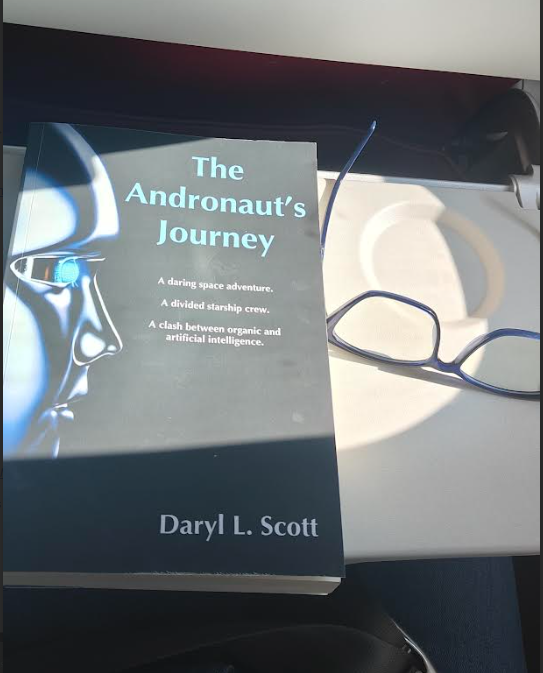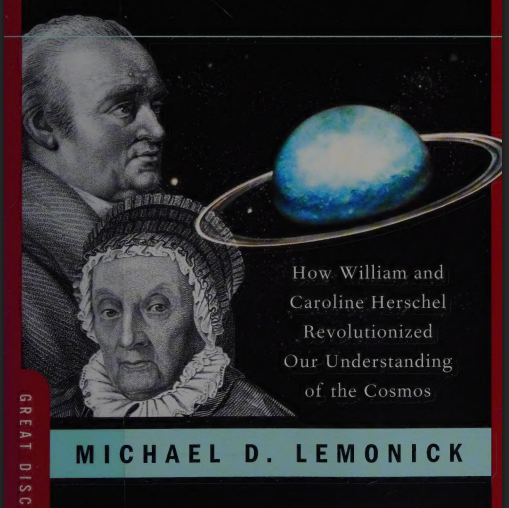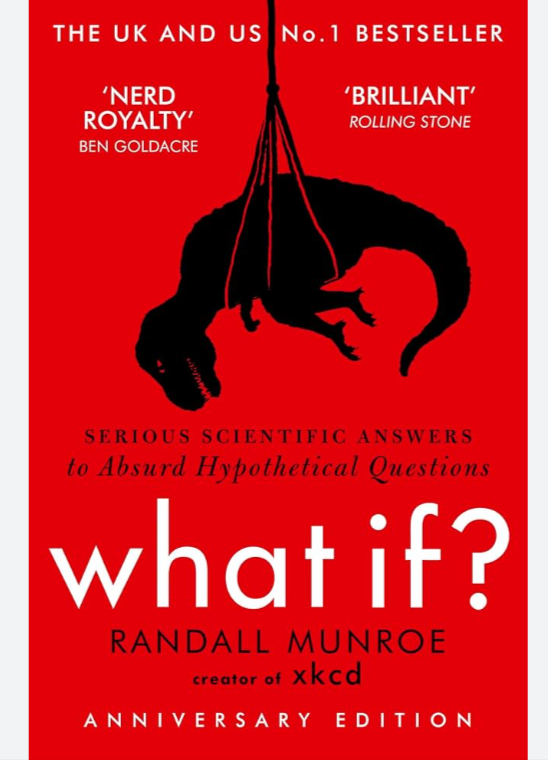
Let me start by confessing something, even after reading a lot about the science behind it, I probably couldn’t explain how entropy works in thermodynamics without sneaking a quick peek at Wikipedia. But I am, without apology, obsessed with questions – the weirder, the better.
That is why I love books that have answers and this time, I spent my weekend with What If? by Randall Munroe, first published in 2014. And while I was gliding across pages, thoughts like these surfaced:
“Wait, what did I just read?” and “Why didn’t I think to ask that?”
It’s like if Neil deGrasse Tyson and Richard Feynman teamed up to write a physics textbook, and then blew it up, just to see what would happen.
What’s This Book About?
This book is written by Randall Munroe, former NASA roboticist and creator of the xkcd webcomic, in here, he mixes hard science, and absurdity to tackle humanity’s strangest questions, with a tinge of wit, and the occasional existential panic.
The structure is pretty simple, readers send in ridiculous, and sometimes slightly concerning questions, and Munroe responds with real scientific analysis along with plenty of jokes.

From Shattered Teeth to Exploding Planets
One reader, for instance, asks if your teeth could shatter from drinking hot coffee after being cooled to extreme cold. Munroe doesn’t break down the material properties of enamel, instead, he thanks Shelby (the questioner) for his new recurring nightmare.
Another person wants to know how many houses would need to burn each year and how to increase that number by 15%. The answer isn’t scientific. It’s, “HELLO, POLICE? I HAVE THIS WEBSITE WHERE PEOPLE SUBMIT QUESTIONS…”
Munroe also dives deep into hypothetical physics scenarios too, like what happens if the Earth suddenly stops spinning? And the answer he gave is, total planetary disintegration, shown through a series of stick-figure illustrations captioned “OH”, “E”, “D”, “Y”, and “K” – a poetic visual for global annihilation. Or what if you punched a baseball traveling at 90% the speed of light? Well, you wouldn’t break the sound barrier, you’d break the Moon, Jupiter, and probably the Sun.
A Trillion Moles, Giraffe Pyramids, and Cheese Wire Murders
Every few pages, I found myself pausing to appreciate just how out there these questions get, like:
- How much damage would a trillion moles (the animal) cause if they emerged on Earth at once? Enough to fill the crust up to Mount Everest, and shake the Moon, too.
- Could you build a pyramid out of giraffes? Apparently, no, not even close.
- How fast would you need to run into a cheese-cutting wire to be sliced in half? The response was a long, visceral “AAAAAAAAAAAA!!!” and no follow-up.
You see where this is going, the book thrives because it doesn’t dismiss strange or unusual ideas as not worth looking into. Instead, it encourages exploring and examining those unusual ideas.
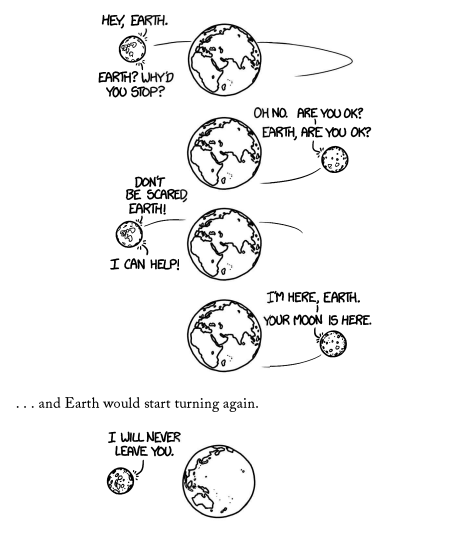
Lasers, Lightning, and Lunar Basketball
Some scenarios are unexpectedly enlightening, like how different lasers aimed at the Moon would affect what we see from Earth. From dim red pointers to megawatt lasers, there’s a weird satisfaction in seeing that even 500-terawatt beams wouldn’t light up the Moon, they’d just vaporize the surface.
Or take the question, what if you played basketball on the Moon? The ball would bounce comically high, and you’d feel like an NBA demigod.
And then there are practical warnings like, “NO! DON’T STARE DIRECTLY INTO A LIGHTNING BOLT — IT CAN DAMAGE YOUR EYES.”
When Science Meets Pop Culture Panic
The book doesn’t shy away from pop culture references or absurd medical what-ifs. For example:
- Could a person cry enough to dehydrate themselves? The response is a concerned “KARL, IS EVERYTHING OK?”
- What happens if you fall from the edge of space (like 250 km up)? Turns out, atmospheric drag becomes your unexpected BFF, slowing your fall just enough to make it survivable (in theory).
- Can Venus flytraps digest a human? Munroe says it would take seven years, if the person was chewing gum, and somehow brings in Star Wars and Boba Fett. You kind of have to see it to believe it.
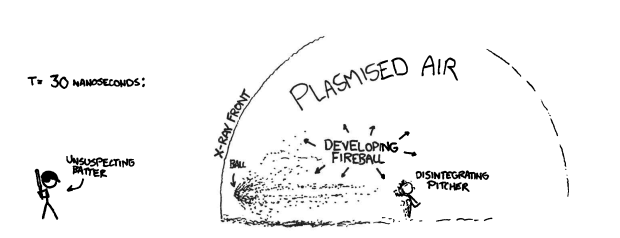
There’s also a whole spread about trying to stop a volcano using a nuclear bomb, to which the answer is just an emphatic, “NO”.
There are also sections talking about the radiation levels near nuclear fuel pools, the feasibility of structures reaching from Earth to the Moon, or the caloric value of an average human body (which, for the record, the author doesn’t answer).
So, what’s the point?
What If? openly supports curiosity. The book encourages you to ask questions, even silly or worrying ones, like “Is my friend okay?” all questions are taken seriously, treating them like real science questions. For example, it might ask if Thor’s hammer could cause tornadoes – answer is no – and if dumping antimatter into a nuclear disaster like Chernobyl would stop it – again, the answer is, definitely not.
In a playful manner, the book gives references to science topics such as how physics, biology, space, and engineering work. Pure delight!

Takeaway: Delightfully Deranged, Brilliantly Nerdy
Reading What If? made me remember why I love science, not the formulas or the textbooks, but the sense of awe and the freedom to ask the impossible. It reminded me that even if I’ll never understand entropy in thermodynamics without help, I can still revel in the weirdness of the world.
So if you’ve ever wondered how fast a human would need to run to slice themselves in half with cheese wire, or what would happen if you shone a laser the size of a city block at the Moon, this book was written for you.
And if you haven’t? Well, you will wonder, by the end of page one. Yes, this book has the power to change its readers, it’s worth a try!

